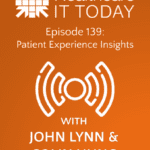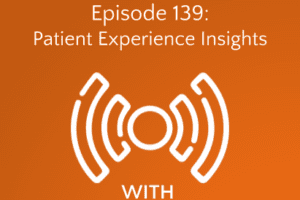As a patient, I’ve never tracked how prior authorizations for my meds were going. Yes, I ask providers whether they’re making progress, but I never get a detailed response, nor do I demand one. Why? Because honestly, there’s little I can do to speed up the process or affect the final outcome.
However, it appears that at least one company wants to see this change. Recently, CoverMyMeds announced that due to its integration with Epic’s MyChart portal, patients will be able to see for themselves where their medications are in the process of getting authorized. Will it actually help patients? Let’s hold that question for a bit as we lay out the facts.
First, let’s take recognizance of the fact that this new functionality is available through Epic’s App Orchard. App Orchard is a program designed to help physician practices and hospitals build customized apps, as well as supporting independent app developers targeting providers and patients.
According to its news release, once CoverMyMeds’ integration with MyChart is deployed, patients will also find out whether their meds are ready for pickup or if the prior authorization is declined. The system will also help patients decide whether paying for a med out of pocket will be more efficient. In the event the patient wants to pay for their prescription, CoverMyMeds offers ready access to prescription drug cards (not that it’s terribly difficult to access them anyway).
The release also notes that MyChart is designed to complement RxBenefit Clarity, a prescription decision support tool that is located within the prescribing workflow. The tool displays the lowest patient pay amount for prescriptions, including their paying for the drug in cash. It also allows providers to initiate a prior authorization request electronically.
In describing both RxBenefit Clarity and the new patient-facing Epic app, McKesson (which acquired CoverMyMeds) describes their functions as offering “transparency” to the prescription benefit dilemma facing many consumers. On its face, this sounds like a patient-friendly approach that will help patients manage prescription expenses.
However, bear in mind that CoverMyMeds is part of healthcare technology giant McKesson Prescription Technology Solutions. McKesson says the mission of its subsidiary is to create a connected healthcare network to improve medication access. According to McKesson, the CoverMyMeds network includes more than 500 EHRs. 60,000 pharmacies, 700,000 providers and most health plans and PBMs.
Looked at from that perspective, it’s worth asking whether patient savings is really what McKesson had in mind when creating these tools. I’d argue that it’s unlikely. Sure, they might help a bit when patients need prescriptions, but unless the level of detail is high and offers patients an opportunity to intervene, the information may not be that valuable.
My hunch is that details on the sluggish and sometimes unfair prior authorization process will largely be discouraging and will push more consumers into cash transactions. Given the massively inflated prices consumers pay when they go out of pocket, everyone in the pharmaceutical value chain wins, but the patients do not.
Hey, I’m all for creating tools that help patients (like me) cope with the cost of prescription drugs, and perhaps the new tool will be beneficial in some situations. The rest of the time, though, it will just push consumers to give up and pay the ghoulishly high prices involved in managing their health.
(P.S. If I sound angry, you’ve got that right, and please take this into account. My mother was just forced to pay $300 out of pocket for a crucial medication, and I strongly doubt that “transparency” would have made much impact on the situation. If it can’t do much to help people like her, will tools like the ones described above make much of an impact on consumer prescription expenses?)














I share your frustration on this issue. As a consumer I see a lot of noise and little improvement. Price transparency is nice but it doesn’t really address the 400 lb gorilla of high costs. The only thing that will is when consumer start to push back on the cartels of Docs & Pharma and stop buying their products all together (when possible)